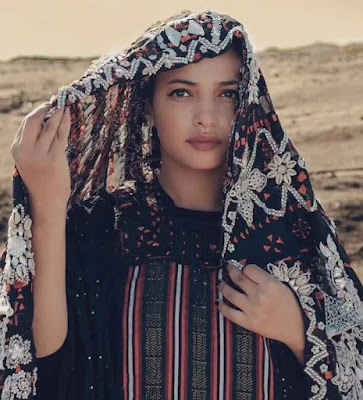1.ITALY
You couldn't miss a performance by Italian folk musicians or dancers if you tried -- their colorful costumes will definitely catch your eye. The women wear colorful embroidered skirts and bodices over light-weight chemises or blouses, with elaborate hats decorated with flowers or fruit.
The clothes worn by wealthy Italian women looked like peasant garb, but they used richer fabrics like silk and velvet. The rich also had access to colorful dyes, so the color palette varied more widely. Upper-class Italian women also tended to wear more jewelry than peasants.
2.INDIA
In India, women's clothing varies widely and is closely associated with the local culture, religion and climate.
Traditional Indian clothing for women in the north and east are saris worn with choli tops; a long skirt called a lehenga worn with choli and a dupatta scarf to create an ensemble called a ghagra choli; or shalwar kameez suits, while many south Indian women traditionally wear sari and children wear pattu langa.
3.GREECE
Traditional women's clothing in Greece also varies from region to region, but these outfits also contain similar elements. Most traditional costumes for women have a simple cotton dress as a base, with a sleeveless wool vest over it. To this, women may add aprons, sashes and, perhaps most importantly, large head scarves.
One example of a traditional outfit for women is the karagouna. This traditional wedding dress from Central Greece is very colorful and can be quite heavy.
4. SPAIN
Most traditional Spanish clothing is reserved for special events and celebrations. The most common pieces, still used today, include: the mantilla, the peineta, and the gilet. - The mantilla is a traditional Spanish veil piece that is often worn during religious celebrations such as Spanish weddings.The traditional Mexican dress is also called "typical dress" from the different states or regions of Mexico.
There are beautiful typical Mexican dress designs in every corner of Mexico and they are used in religious, patriotic or cultural celebrations.
Michoacan Traditional Mexican Dress
Women use sophisticated clothing: A skirt with a pattern, a long blouse with embroidery at the bottom and around the neck, a belt strapped on the back, and usually a rebozo.
Blouses with more embroidery are used in special celebrations.
Aprons are also typically used and they also have nice cross stitch embroidery decoration.
Chiapas Traditional Mexican Dress
It consists of a wide skirt with a full decoration of stripes with colorful and stunning flowers usually embroidered in silk or similar thread (articela).
7.RUSSIA
In southern Russia, traditional women’s clothing consisted of a long, plain shirt and a long skirt, made of three pieces of cloth stitched together. This was the most common clothing for married women. The hem would often feature embroidery and other decorations. The cloth of the skirt contained wool, in comparison to the shirt, which was made of just cotton. A wool string, called a gashnik, held the skirt in place, and an apron was often worn over the skirt. In the south, the shirt was also often richly embroidered with designs.8.IRAN
As long as I know, the traditional clothing of women in that era was like traditional dresses that women wear right now which mostly includes a Chador (like a cloak), a gown beneath the chador and a scarf for hair-covering. Though, in more rural areas, women used to wear a piece of white fabric to hide their face . Moreover, insteat of chador they used to wear something like a skirt (chaghchoor) that covers the whole body from the top of head to bottom of feet10 PORTUGAL
traditional clothing was worn until well into late 20th century. The materials were very colourful due to patterns woven into the cloth and embroidery. Red and black are the two most popular colours.Traditional women’s costumes typically consist of long bouffant skirts (saia) with vibrant checked or striped patterns (most often in red and white) with a blouse and sometimes a waistcoat/bodice. Highly embroidered aprons are worn over the skirt. The outfit is completed with a headscarf to cover the hair. Traditionally, women wear several ornate gold necklaces and finish their outfit with a matching headscarf worn in a variety of ways: ends hanging down, tied under the chin or behind the neck.















0 Comments
Post a Comment